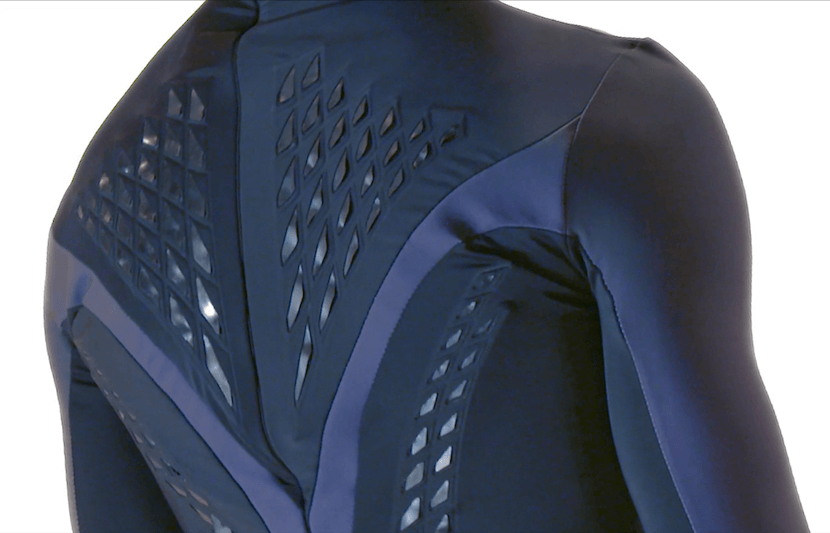A team of researchers at the MIT Media Lab have developed an unconventional way to keep you cool on long sweaty runs, bike rides, or trips to the gym.
The researchers constructed a latex workout suit with ventilating flaps, triggered by an athlete’s sweat and body temperature. The flaps are coated with microbial cells, which change in size due to the humidity of their environment. The cells do no harm to the skin, and are even safe to ingest.
TUN spoke with Dr. Wen Wang, the study’s lead author and a former research scientist in MIT’s Media Lab and Department of Chemical Engineering, to gain insight on the research.
“We found that microbial cells are sensitive to moisture change in the environment. At dry condition, the cell shrinks to a smaller size, while at humid condition, it swells to a bigger size,” said Wang. “We utilized this mechanical cell size change for making biohybrid fabric. This fabric can respond to skin moisture through bending, and create the airflow to help remove the moisture on the skin. It can sense your sweat release and response to enhance the ventilation.”
When the microbial cells don’t sense moisture, the latex flaps sit flat against the skin, like any other shirt.
The team consists of bioengineers, designers, architects, fashion designers, mechanical engineers, chemical engineers, and industry experts. “Wang co-led the project, dubbed bioLogic, with former graduate student Lining Yao as part of MIT’s Tangible Media group, led by Hiroshi Ishii, the Jerome B. Wiesner Professor of Media Arts and Sciences,” according to an MIT news release. MIT also paired up with researchers from New Balance Athletic to develop the product.
“At the MIT Media Lab, Tangible Media Group focuses on developing programmable material to seamlessly connect the digital world with the tangible world,” Wang Informed TUN. So Tangible Media group was the perfect place to make their research into a physical product. “In this work, we combined knowledge in biotechnology, material science, mechanical engineering and design, to fabricate sweat-responsive micro-actuators, which is well-aligned with our research scope “programmable materials,” Wang said.
Students played a considerable role in the development of the project. MIT PhD students and visiting PhD and Masters students came to help, mainly in the designing process. “Their involvement is essential and key in this project, especially the participation of Dr. Lining Yao and Mr. Chin-Yi Cheng,” Wang told TUN. Jonathon Zuniga, Kyle Yuan, and Nicole Zeinstra are undergraduate students who worked toward the development of the project. “They were involved in the early stage when characterizing the cell performance,” Wang said.
The use of yeast, bacteria, and other microbial cells does not stop with shirts. “We can combine our cells with genetic tools to introduce other functionalities into these living cells,” Wang said in a statement. “We use fluorescence as an example, and this can let people know you are running in the dark. In the future we can combine odor-releasing functionalities through genetic engineering. So maybe after going to the gym, the shirt can release a nice-smelling odor.”
The researchers have already developed a running shoe with similar ventilating technology. The ventilation flaps sit towards the bottom of the foot, directly above the sole. That is where the most sweat accumulates.
The workout suit is not yet marketable, and that is partially due to the fact that they haven’t tried to wash it yet. Researchers are worried that the microbial cells will separate from the material in the wash, and that…could be a problem. But Wang has a possible solution, according to Popular Science, in that “spilled wine or blood on your dirty shirt could be food for bacteria (or more likely, yeast) that could remain alive and gobble up those substances and emit a nice odor in the process.”
Clearly, there are some kinks to be rubbed out, but the researchers have high hopes for the future. “The technology is still in incubation stage,” Wang told TUN. “We are not ready to market it at this moment. But we hope to work together with companies in the wearable field to co-develop the technology and commercialize it in the future.”



